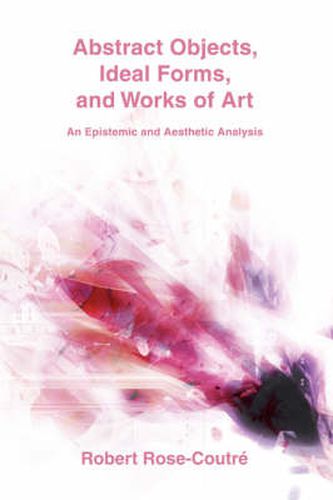Readings Newsletter
Become a Readings Member to make your shopping experience even easier.
Sign in or sign up for free!
You’re not far away from qualifying for FREE standard shipping within Australia
You’ve qualified for FREE standard shipping within Australia
The cart is loading…






This title is printed to order. This book may have been self-published. If so, we cannot guarantee the quality of the content. In the main most books will have gone through the editing process however some may not. We therefore suggest that you be aware of this before ordering this book. If in doubt check either the author or publisher’s details as we are unable to accept any returns unless they are faulty. Please contact us if you have any questions.
Joining philosophy of language with phenomenological aesthetics, this book defines the epistemological status of abstract objects and works of art. Beginning with a provocative conversation between Socrates, Plato, Wittgenstein, and Jung, the book introduces the concept, and coins the term, Platonic Inductive Fallacy, deriving from a cycle of language games. The author then invokes Robert Stalnaker to clarify the difference between real and actual objects, which gives new insight into the epistemology of abstract objects. Armed with defined abstract objects, the reader is taken through a fascinating journey from 1890s aestheticism to present-day phenomenological aesthetics. The book clearly establishes principles and methods for defining works of art, and applies them to two versions of a Henry James novella. The clear definitions and inventive methods, supported with impressive, detailed research, lead to compelling and well-taken conclusions. This journey pays off with important and exciting results.
$9.00 standard shipping within Australia
FREE standard shipping within Australia for orders over $100.00
Express & International shipping calculated at checkout
This title is printed to order. This book may have been self-published. If so, we cannot guarantee the quality of the content. In the main most books will have gone through the editing process however some may not. We therefore suggest that you be aware of this before ordering this book. If in doubt check either the author or publisher’s details as we are unable to accept any returns unless they are faulty. Please contact us if you have any questions.
Joining philosophy of language with phenomenological aesthetics, this book defines the epistemological status of abstract objects and works of art. Beginning with a provocative conversation between Socrates, Plato, Wittgenstein, and Jung, the book introduces the concept, and coins the term, Platonic Inductive Fallacy, deriving from a cycle of language games. The author then invokes Robert Stalnaker to clarify the difference between real and actual objects, which gives new insight into the epistemology of abstract objects. Armed with defined abstract objects, the reader is taken through a fascinating journey from 1890s aestheticism to present-day phenomenological aesthetics. The book clearly establishes principles and methods for defining works of art, and applies them to two versions of a Henry James novella. The clear definitions and inventive methods, supported with impressive, detailed research, lead to compelling and well-taken conclusions. This journey pays off with important and exciting results.